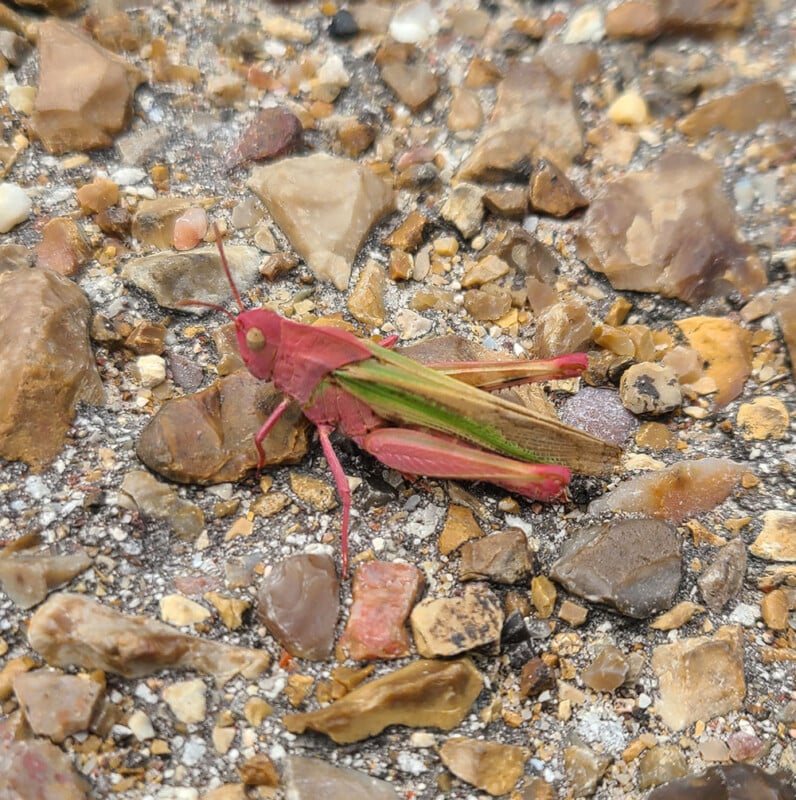Park Ranger Finds Rare Pink Grasshopper in Texas

A rare pink grasshopper was photographed in a wildlife refuge this week — but its unusual color spells bad news for the insect.
Laura Bonneau from the U.S. Fish and Wildlife Service came across the abnormally shaded grasshopper while in the Aransas National Wildlife Refuge south of San Antonio, Texas.
“Pretty in pink,” writes the Wildlife Refuge on Facebook. “We spotted this pink grasshopper (we believe it’s a green-striped grasshopper) in the observation tower parking lot earlier this week.”
However, the bug’s pink coloring is actually caused by an anomaly that the grasshopper could do without.
“While rare, this pink coloration is actually due to a genetic mutation called erythrism,” explains the Wildlife Refuge. “And it is caused by the overproduction of red pigments and the underproduction of dark pigments.”
Its dazzling color makes the grasshopper stand out against the green foliage they are typically found in. While it might be okay if it is perched on a red flower, it is more likely to be a meal for another animal.
“Because these bright pink ‘hoppers are not well-camouflaged, they’re much more likely to be eaten by predators. Good luck, little one!” Adds the Wildlife Refuge.
“So pretty. I hope he will be okay,” writes Diane Haines. “No, he’s just sunburned. Get him an umbrella,” jokes Jackie Vasquez.
Why Are Some Grasshoppers Pink?
Erythrism in grasshoppers is a genetic mutation that causes them to have a reddish or pinkish coloration, rather than the typical green or brown coloration of most grasshoppers.
The exact cause of erythrism in grasshoppers is not fully understood, but it is thought to be the result of a genetic mutation that affects the production or expression of pigments in the insects’ exoskeleton.
One theory is that the mutation affects the synthesis of pigments called ommochromes, which are responsible for producing the green and brown coloration in most grasshoppers.
Another theory suggests that erythrism may be caused by a mutation in a gene that regulates the expression of pigments. This mutation could result in the upregulation of genes responsible for producing reddish or pinkish pigments, while downregulating genes responsible for producing green and brown pigments.
It’s important to note that while genetic mutations can result in changes in coloration, the factors that trigger mutations are complex and can be influenced by a variety of genetic and environmental factors.
Image credits: Laura Bonneau/USFWS